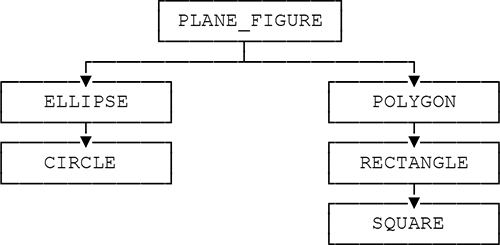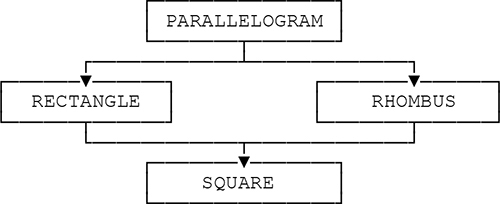Part II
Inheritance
Several of the entries appearing in this part of the dictionary consist essentially of expansions of, or elaborations on, entries marked “Without inheritance” in Part I. Such entries are marked “With inheritance” accordingly.
Examples in what follows are based for the most part on either the simple type hierarchy shown in Fig. 2 or the slightly more general type graph shown in Fig. 3. Note that Fig. 2 involves single inheritance only and Fig. 3 involves multiple inheritance.

Fig. 2: Sample type hierarchy (single inheritance, q.v.)

Fig. 3: Sample type graph (multiple inheritance, q.v.)
The Type Hierarchy of Fig. 2
Fig. 2 is based on a collection of more or less self-explanatory geometric types—ELLIPSE, POLYGON, SQUARE, and so on.1 What it shows is that, e.g., type CIRCLE is a subtype of supertype ELLIPSE, which means that all circles are ellipses but the converse is false (some ellipses aren’t circles). As a consequence, all properties that apply to ellipses in general apply to—i.e., are inherited by—circles in particular, but the converse is false (circles have properties of their own that don’t apply to ellipses in general). Note: “Properties” here means, primarily, ...
Get The New Relational Database Dictionary now with the O’Reilly learning platform.
O’Reilly members experience books, live events, courses curated by job role, and more from O’Reilly and nearly 200 top publishers.

